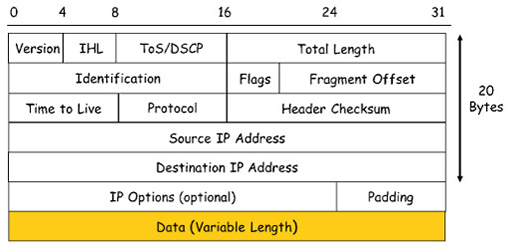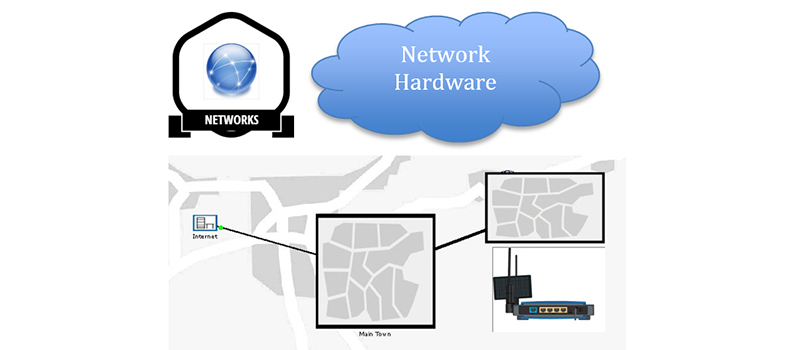8 Internet layer – IPv4
- The Internet layer is responsible for exchanging packets over a network between identified end devices. The two most common protocols within the Internet layer are IPv4 and IPv6.
- Both protocols provide devices with a unique IP address to allow for packet delivery. You have seen previously that the growth of the Internet means that IPv4 can no longer support unique addresses for every device that requires Internet access, so Network Address Translation (NAT) is used to ‘hide’ non-unique private IP addresses behind unique public IP addresses.
- Both IPv4 and IPv6 provide a protocol with an independent means of transferring packets across networks. This means that neither is interested in the contents of data it receives from the transport layer (TCP or UDP) for encapsulation within IP packets. Nor are they interested in the network access protocol used within a local network segment – they will work equally well over wired Ethernet or wireless WiFi.
- IPv4 can receive either TCP segments or UDP datagrams from the transport layer, which it encapsulates within packets. The encapsulation process adds a header containing various fields required for the operation of IP:

Figure 11
- The image above shows the many fields that make up an IPv4 header. The important fields to note are:
- Source address: the 32-bit address assigned to the NIC of the host that created a packet.
- Destination address: the 32-bit address of the device to which the packet is sent. This field is used by routers when they make a packet forwarding decision.
- Data: this is the payload that an IP carries, typically a segment or datagram from the transport layer. The payload can vary in size, but should not exceed 1480 bytes.
- Protocol: this is the identity of the transport layer protocol encapsulated within the packet. Protocols are identified using a service access point (SAP) number, which is 06 for TCP and 17 for UDP. Because the SAP of the transport layer protocol is identified in each packet, IP can deliver segments to the correct transport layer protocol on the receiving device.
- Header check-sum: this allows IPv4 to determine if the header has been damaged during transmission. If IPv4 discovers a damaged header, the entire packet is dropped. Because IPv4 does not guarantee reliable delivery of packets, it relies on TCP to arrange for retransmission of the segment encapsulated within the dropped packet.
- Time to live (TTL): provides a lifetime for each packet, which if exceeded will cause the packet to be dropped. The actual value initially placed in the TTL field depends on a computer’s operating system, but the maximum value is 255. Each router that receives a packet as it is forwarded towards its destination will reduce the value of the TTL field by ‘1’. If a router receives a packet with a TTL value of ‘1’, it will discard the packet. This protects the Internet from endlessly forwarding packets that have become stuck in a loop.
- Encapsulating a segment or datagram within an IPv4 header adds an additional 20 bytes of data, and this can sometimes be exceeded if some of the optional fields are used.
Back to previous pagePrevious
7 Transport layer – ports
